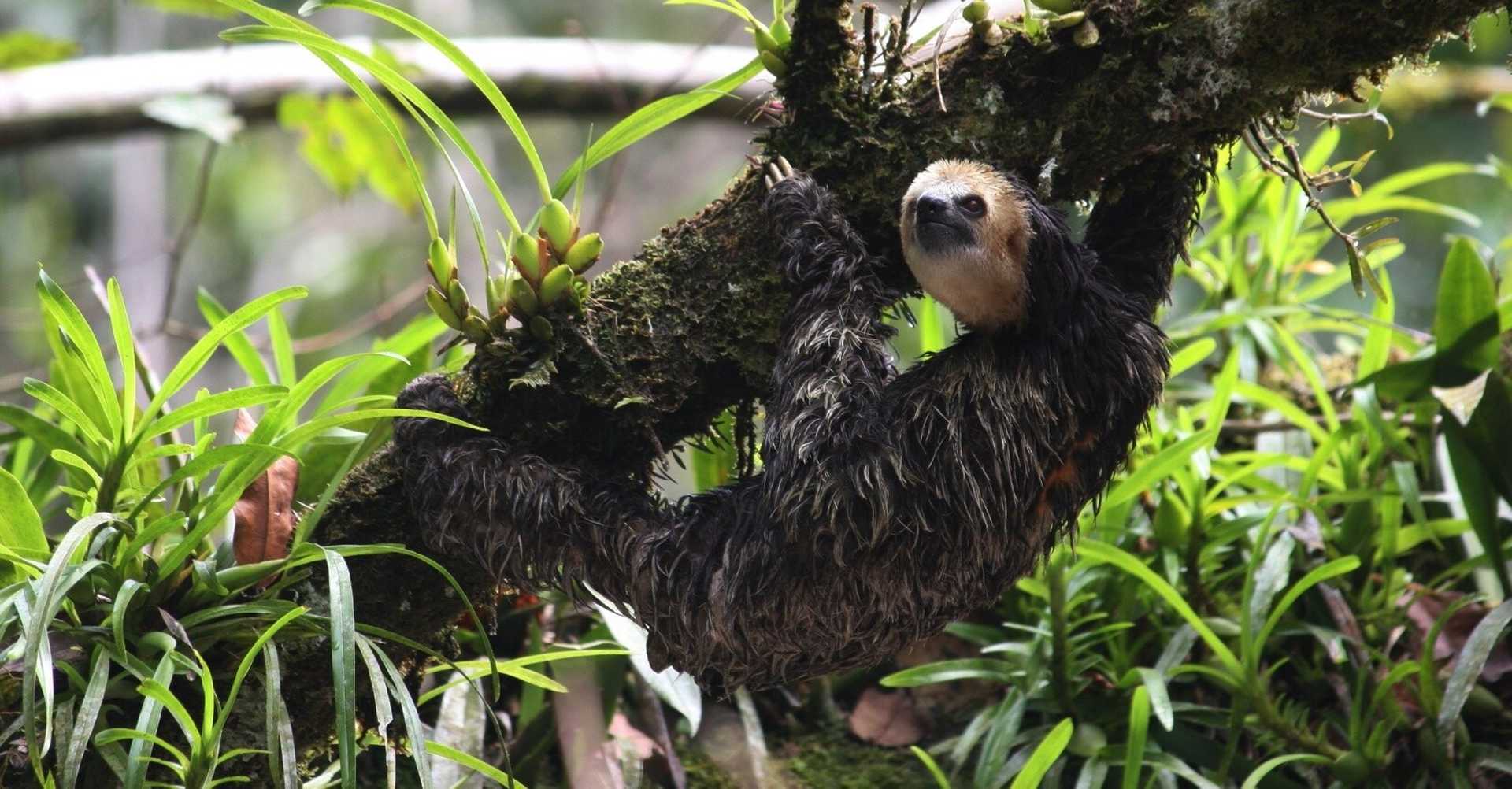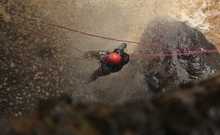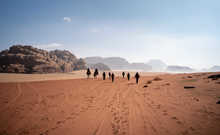Kanuku Mountains Adventure
- Kandoo Multi-activity
- Kandoo Trekking

Contact
our UK team


Today our driver will meet you upon arrival at Cheddi Jagan International Airport (GEO). Keep an eye out for them holding an orange KANDOO sign. Then you'll take a private transfer to our hotel where you will then have the rest of the day to relax or explore Georgetown.
This morning we fly over endless expanse of rainforest to the tropical town of Lethem. We then hop into our comfortable 4×4 vehicles and make the journey to the edge of the forest, in which is nestled the small Makushi village of Parishara. Our experienced indigenous guides will meet us here, armed with their handmade reed backpacks, the straps made from simple leather. It is here that we will collect our Jungle Kits and our adventure will begin. We will then spend the rest of the day, on the banks of a gently flowing creek, learning the basics of bush camping; setting up hammocks camps, practising jungle safety, and using machetes, before our guides cook us a well-earned fireside dinner.
Today we set out on the ultimate jungle experience! We follow tiny streams and faint trails, hopping between rocks and bobbing below hanging vines. Following our guides, we traverse along the foothills of the Kanuku Mountains, one of the least explored places on the planet; a true wilderness. Upon arrival at our camp spot, we set up our hammocks and then cool down with a dip in a nearby stream. As night falls, there is an opportunity to join an exploratory night walk to experience the jungle as it comes alive, before settling down by the fire, surrounded by the enchanting sounds of the jungle.
Following the ebb and flow of the jungle, today we continue our trek deeper into the mountains, to the theatrical curtain of Paimu Falls. This small waterfall flows over a stepped granite pavement in the upper reaches of Kamarapa Creek. It's remote and rarely visited surroundings are only accessible on foot, making them a delightful home to a wide variety of wildlife, fish and an abundance of plant species. As the falls cascade into the low-lying jungle, they form a crystal-clear pool, alongside which we set up our camp for the night.
Today is a full day of exploration spent at the falls. Our guides teach us the basics of expedition living: fire lighting, fishing, foraging, tracking, and even diving in the crystal-clear water of the falls to spear fish. This is where our expedition belt really comes into it's own! In the evening, we don our headlamps and head out for a walk along the riverbank to spot some of the many elusive animals that inhabit this area; dwarf caiman and electric eels to name a few.
Today is our final day of hiking and we continue along barely visible trails until we reach Salipenta, a simple landing on the banks of the gently flowing Rupununi River. We say goodbye to our forest guides here and join a new crew for our journey upriver. Travelling in small motorised boats we head up the remote Mapari River, arriving at Mapari Wilderness Camp before nightfall. The camp consists of a simple thatched roof under which hammocks are already slung up, nestled deep in the Kanuku Mountains. Not your typical lodge, Mapari is an untouched, rarely visited place, where wildlife presents itself around every turn. It overlooks a small waterfall and a natural bathing pool, which is one of the few places on the river where the water is brilliantly clear. Tonight we enjoy a hearty meal, cold drinks and rum served around the campfire.
Our camp is nestled at the base of Mapari Falls, a breathtaking waterfall strewn with large, rounded boulders and is the perfect location for viewing the unique wildlife that inhabit this area. With a nest close by homing the world's largest eagle, the Harpy Eagle, a burrow in the forest that houses a Goliath bird-eating spider and a diverse range of snakes draping themselves over branches in the canopy above, there is plenty to explore. Over the next few days you can choose to join on different activities, based on your interests. There will be opportunities for forest hikes - both by day and night, fishing and swimming in the refreshing waterfalls. You can also board the boats and embark on a river drift at dawn or dusk looking for wildlife or spotlighting night drifts in search of nocturnal species. Each evening we settle by the fire, with a filling meal and discuss the days adventure.
This morning, after breakfast, there is time to join in on one final activity before it is time to pack up our things. Later in the morning, we depart on a scenic floating descent, down the river, from mountains to savannah. We join the larger Rupununi River, keeping our eyes peeled for wildlife as we make the slow, gentle journey to Yupukari. Arriving at this indigenous village, we make our way to the Caiman House Research Station, a community-owned and operated eco-lodge in the heart of the village. Here we can at last enjoy a refreshing shower and proper beds! Once clean and comfortable, we are offered the unique opportunity to observe or participate in an ongoing field study of the Black Caiman. Our presence alone at Caiman House, provides essential funding and support to help protect this endangered species. We will observe the capture of the Caiman from a separate boat, but will be offered the opportunity to assist in data collection once back on land. Caiman are weighed, measured, sexed and tagged before being released back into the river. The research has already discovered interesting information on caimans’ nests that was previously unknown.
This morning we climb into our comfortable 4x4s and make the journey across the savannah to Lethem in time for our flight back to Georgetown. Upon arrival back in the city, we check into our hotel and have the afternoon at our leisure. This evening we will join Chef Delven Adams at his famous Backyard cafe for an authentic Guyanese meal. This is a great opportunity to thank our guides and reflect on the highlights of our rainforest adventure.
Today is a real bucket list experience as we board a scheduled flight over a blanket of unbroken rainforest to the striking cascade of Kaieteur Falls, the world’s highest free-falling waterfall. Landing on a simple airstrip nearby, we head to the top of the falls where the amber water torrents over gnarled sandstone before plummeting 741ft (five times the height of Niagara Falls!) to it's rocky base. It is in this unique microbiome that we can find rare species such as Tank Bromeliads, the tiny Golden frog or the colourful Guianan Cock-of-the-Rock. Reboarding our flight we make the return journey to Georgetown where there is the option to include a food tour along the vibrant promenade that comes alive at dusk or simply explore the city for yourself.
We will collect you from your hotel and transfer you to the airport for your departing flight today.
Your participation is part of the challenge of the trip and
you will find the more involved you are in all the activities, the more
rewarding the experience. Unlike some of our other tours, on this trip you will
be expected to carry your own equipment in your rucksack, so ensure to pack as light as possible! As well as hiking, you will also be packing away
and putting up hammocks and basha (tarps), assisting with cooking, loading and
unloading boats and fetching water. There are no porters, cooks or waiters on
this trip, you are part of the expedition and must do your share of the work.
Although this makes the adventure more demanding, it also adds to the enormous
sense of satisfaction and achievement at the end of your journey.
If you have any questions about your suitability for this
trip or would like more specific information about what to expect, please do
not hesitate to contact us.
Whilst trekking through the Kanuku Mountains we will be
setting up hammock camps each night to sleep in. Hammock camping is very
much open air, you will have your own hammock that you will string up alongside
your fellow trekkers (earplugs for these nights are essential!). On your first
night you will be taught how to set up your basha (3x3m tarp) and hammock with your
camping mat placed below them, to step onto when getting out of your hammock.
Your basha will protect you from rain during the night and the inbuild mosquito
nets on the hammocks will protect you from any bugs. A kitchen area will also be set up which will include small camp chairs, a water station and fire. This will be where you eat your evening meals and socialise whilst at camp. The toilet situation whilst in our expedition camps is a case of "going wild" and our guides will usually designate an area in which to do this. You will need to bring some toilet roll with you, please ensure you dispose of this appropriately in the rubbish bags provided.
Mapari Wilderness Camp is only accessible by boat and
is situated on the uninhabited Mapari River surrounded by pristine rainforest.
It is a simple hammock camp consisting of a thatched shelter under which
hammocks are strung up. At the front of the camp is a riverside open-air
dining area, where the only sounds are the rush of the river and the chorus calls of the surrounding forest. The river here has some of the clearest
water in Guyana and pools nearby create perfect natural baths. Although
extremely basic, this will feel positively luxurious after several days of
jungle camping. At Mapari Camp there are pit latrines, situated about 50m from the main camp down a clearly marked trail to provide you with some privacy. Toilet roll is provided in these.
Guesthouse accommodation is booked on a full board and you
will stay in simple twin rooms with ensuite bathrooms.
Main Bag Weight: 9kg
From US
there are daily flights to Cheddi Jagan airport with American Airlines. They offer a daily service from
New York and on some days two flights from Miami. There is also a direct
nonstop service with United Airlines out of Houston.
It is a requirement of joining any
of our trips that you attend a pre-trek briefing the evening before the trip
begins. This gives our guide team the opportunity to review the plans for the
trip with you, make sure you have all the right gear and answer any
questions you may have. The briefing in Georgetown is held the evening before
the trip begins and will be arranged by your guide upon arrival at your hotel.
Should you arrive on a late flight, you will have your briefing on the morning
of Day 2.
Tipping customs vary all over the world and can be very confusing when travelling to a new country. Tipping is completely voluntary in Guyana, and at your discretion. The decision on how much to tip should be determined by how well the team serve you whilst you are on your adventure. Tips should be made in Guyanese Dollars and we recommend allocating the equivalent of US$100-150 (~GY$20,900 - 31,600) per trekker for your tips.
You will be provided with these once you are in the Rupununi region after your flight to Lethem. If you have some of this kit yourself and wish to bring it instead you are more than welcome, however please keep it as light as possible. Your bag should weigh no more than 9kg as it needs to fit onto a very small plane for your domestic flight.
UPPER BODY
LEGS
Comfortable lightweight trousers (x 2 pairs) - Lightweight, quick drying and full length - one pair for during the day and a spare pair for night time.
FEET
| From | To | Price | Availability | Book | Enquire |
|---|---|---|---|---|---|
| 09/10/2025 | 20/10/2025 | £5,299 $6,650 |
Available
|
Book now | Enquire now |
Want to ask us a question or book a private trip? Don't hesitate to contact us!
Contact us